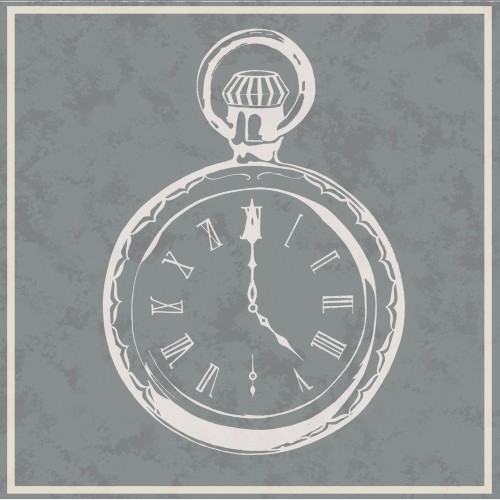 Release Date:
Release Date:





A predicament of our current decade (the post-information age, the Apple era, the epoch of tweeting and twerking alike) is the assumed “futurismo”of the present, while in regards to some of the most fundamental issues of human equality, we’re stuck in the past. Sure, the last couple of years have yielded great strides for the outsider, but doesn’t the imagined utopia of 2113 seem better than the reality of 2013?
In its long history, the futurism of science fiction has been a proud bastion (with some notable exceptions) of gender equality, multiculturalism, and sexual freedom, thanks to authors like Alice Sheldon, Ursula K. LeGuin, and even Gene Roddenberry.
It is in this environment that Janelle Monáe has constructed her persona and her product. By framing her funky, soulful music in the human/android world of the future, she is able to address the social workings of today.
On her sophomore release, The Electric Lady, Monáe mixes her android-themed brand with some of the most articulate blending of R&B, funk, psychedelic rock, and soul to date.
The album is almost exhausting in its grandiosity; longer than an hour and spanning 19 tracks, The Electric Lady would be strenuous if any contemporary of Monáe’s attempted the feat.
Still, it is a practice in dynamic variation, a chameleon-like talent of musical adaptation, full of conscious and intelligent songwriting. The album is laced with homages to past greats, from Sly and Marvin to Hendrix and Outkast, including incredible faux Stevie Wonder keys in “Ghetto Woman,” yet it sounds shiny, new, and innovative.
Monáe masterfully treks through a wide variety of stylistic approaches in The Electric Lady. She employs the snotty, strutting guitar work of collaborator Kellindo Parker on some of the best funk tracks of the year, and shows off her pop savvy with the groovy anthems of “Electric Lady” and “Dance Apocalyptic.”
There are beautiful moments of balladry in the self-empowerment of “Sally Ride” and the ’80s-infused powerhouse closer “What an Experience.” Monáe even styles herself as a rapper in some moments—both “Q.U.E.E.N.” and “Ghetto Woman” culminate in admirable efforts in rhyme.
In addition, Lady opens its doors to a who’s who of critically acclaimed and commercially adored R&B stars, all of whom lend their specific talents to Monáe’s opus without displacing her as the ringmaster of this future funk circus, and the results are the best tracks on the album.
“Primetime” features Miguel’s druggy, seductive musings over a sample of “Where Is My Mind?” (seriously). Erykah Badu jazzes up the already stellar “Q.U.E.E.N.” with a freestyle verse of feminist proclamation within that laid back bass line. And the king himself, Prince, lends his talents to the snarling “Givin’ Em What They Love,” simultaneously proclaiming his presence while validating Monáes own place in the pantheon of funk.
While swollen with moments of musical brilliance, The Electric Lady can be overweight and trudging at times. Most of this excess is a direct result of her insistence on thematic and operatic frameworks to the music.
It’s this need for theme that has been Monáe’s strength and her ball and chain for the entirety of her career.
Her obsessive and perfectionist brand of R&B shines with the chrome exterior of her thematic framework, but it can detract from her natural musicality when exercised extensively.
On Electric Lady, suites of thematic division—complete with well-produced, yet awkward, Bond-ian sci-fi “Electric Overtures”—segment Monáe’s work into a seven-part narrative (parts IV and V compose this latest album). These divisions do nothing more than jostle the flow of the work and test the listener’s patience with Monáe’s excessive costuming.
In addition, various skits are intermingled throughout the album (a trend that began its slow death circa 2007) featuring androids and humans calling into a radio station (will there even be radio stations in the future?) to hammer out issues that Monáe much more successfully brings to attention with her lyricism.
There’s no need for these gimmicky speed bumps that disrupt flow when Monáe so poignantly declares on “Q.U.E.E.N.,” “Am I a freak because I love watching Mary? Hey sister, am I good enough for your heaven? Say, will your God accept me in my black and white?”
Despite its excess, The Electric Lady fulfills Monáe’s vision of a funky, soulful future where androids and guitars and humans and Prince all live both in the music and for the music. Her musings on gender norms, individualism, and equality are poignant and sincere.
Her musical mastery is as evident as ever, especially in a world where few top acts are touring with any real musical accompaniment, let alone a 10+ member band. Whether the mainstream adopts her quirky brand of genre-jumping funk is still to be decided, but the Electric Lady herself has shown that the future is within reach, for both human and android.
Janelle Monáe – The Electric Lady tracklist:
- “Suite IV: Electric Overture”
- “Givin’ Em What They Love (feat. Prince)”
- “Q.U.E.E.N. (feat. Erykah Badu)”
- “Electric Lady (feat. Solange)”
- “Good Morning Midnight (Interlude)”
- “PrimeTime (feat. Miguel)”
- “We Were Rock and Roll”
- “The Chrome Shoppe (Interlude)”
- “Dance Apocalyptic”
- “Look Into My Eyes”
- “Suite V: Electric Overture”
- “It’s Code”
- “Ghetto Woman”
- “Our Favorite Fugitive (Interlude)”
- “Victory”
- “Can’t Live Without Your Love”
- “Sally Ride”
- “Dorothy Dandridge Eyes (feat. Esperanza Spalding)”
- “What an Experience”


